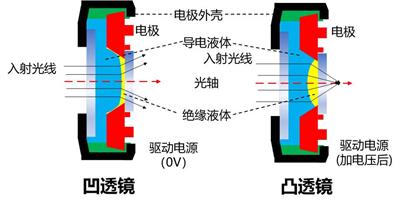
文章内容:如何在YOLOX官网代码中修改–置信度预测损失
环境:pytorch1.8
损失函数修改内容:
(1)置信度预测损失更换:二元交叉熵损失替换为FocalLoss或者VariFocalLoss
(2)定位损失更换:IOU损失替换为GIOU、CIOU、EIOU以及a-IOU系列
提示:使用之前可以先了解YOLOX及上述损失函数原理
参考链接:
YOLOX官网链接:https://github.com/Megvii-BaseDetection/YOLOX
YOLOX原理解析(Bubbliiiing大佬版):https://blog.csdn.net/weixin_44791964/article/details/120476949
FocalLoss损失解析:https://cyqhn.blog.csdn.net/article/details/87343004
VariFocalLoss损失解析:https://blog.csdn.net/weixin_42096202/article/details/108567189
GIOU、CIOU、EIOU等:https://blog.csdn.net/neil3611244/article/details/113794197
a-IOU:https://blog.csdn.net/wjytbest/article/details/121513560
使用方法:直接替换即可
代码修改过程:
1、置信度预测损失更换之FocalLoss(不需要创建新的py文件)
使用:直接在YOLOX-main/yolox/models/yolo_head.py的YOLOXHead类中创建focal_loss方法
(1)首先找到置信度预测损失计算位置loss_obj,并进行替换(位置在386-405行左右)
# loss_iou:定位损失;loss_obj:置信度预测损失;loss_cls:预测损失
loss_iou = (
self.iou_loss(bbox_preds.view(-1, 4)[fg_masks], reg_targets)
).sum() / num_fg
#loss_obj = (
# self.bcewithlog_loss(obj_preds.view(-1, 1), obj_targets)
#).sum() / num_fg
loss_obj = (
self.focal_loss(obj_preds.sigmoid().view(-1, 1), obj_targets)
).sum() / num_fg
loss_cls = (
self.bcewithlog_loss(
cls_preds.view(-1, self.num_classes)[fg_masks], cls_targets
)
).sum() / num_fg
(2)创建focal_loss方法,放到def get_l1_target(…)之前即可,代码如下:
def focal_loss(self, pred, gt):
pos_inds = gt.eq(1).float()
neg_inds = gt.eq(0).float()
pos_loss = torch.log(pred+1e-5) * torch.pow(1 - pred, 2) * pos_inds * 0.75
neg_loss = torch.log(1 - pred+1e-5) * torch.pow(pred, 2) * neg_inds * 0.25
loss = -(pos_loss + neg_loss)
return loss
2、置信度预测损失更换之VariFocalLoss(代码较多,所以额外创建新的py文件)
步骤一:YOLOX-main/yolox/models文件夹下创建varifocalloss.py文件,内容如下:
import torch.nn as nn
import torch.nn.functional as F
def reduce_loss(loss, reduction):
"""Reduce loss as specified.
Args:
loss (Tensor): Elementwise loss tensor.
reduction (str): Options are "none", "mean" and "sum".
Return:
Tensor: Reduced loss tensor.
"""
reduction_enum = F._Reduction.get_enum(reduction)
# none: 0, elementwise_mean:1, sum: 2
if reduction_enum == 0:
return loss
elif reduction_enum == 1:
return loss.mean()
elif reduction_enum == 2:
return loss.sum()
def weight_reduce_loss(loss, weight=None, reduction='mean', avg_factor=None):
"""Apply element-wise weight and reduce loss.
Args:
loss (Tensor): Element-wise loss.
weight (Tensor): Element-wise weights.
reduction (str): Same as built-in losses of PyTorch.
avg_factor (float): Avarage factor when computing the mean of losses.
Returns:
Tensor: Processed loss values.
"""
# if weight is specified, apply element-wise weight
if weight is not None:
loss = loss * weight
# if avg_factor is not specified, just reduce the loss
if avg_factor is None:
loss = reduce_loss(loss, reduction)
else:
# if reduction is mean, then average the loss by avg_factor
if reduction == 'mean':
loss = loss.sum() / avg_factor
# if reduction is 'none', then do nothing, otherwise raise an error
elif reduction != 'none':
raise ValueError('avg_factor can not be used with reduction="sum"')
return loss
def varifocal_loss(pred,
target,
weight=None,
alpha=0.75,
gamma=2.0,
iou_weighted=True,
reduction='mean',
avg_factor=None):
"""`Varifocal Loss <https://arxiv.org/abs/2008.13367>`_
Args:
pred (torch.Tensor): The prediction with shape (N, C), C is the
number of classes
target (torch.Tensor): The learning target of the iou-aware
classification score with shape (N, C), C is the number of classes.
weight (torch.Tensor, optional): The weight of loss for each
prediction. Defaults to None.
alpha (float, optional): A balance factor for the negative part of
Varifocal Loss, which is different from the alpha of Focal Loss.
Defaults to 0.75.
gamma (float, optional): The gamma for calculating the modulating
factor. Defaults to 2.0.
iou_weighted (bool, optional): Whether to weight the loss of the
positive example with the iou target. Defaults to True.
reduction (str, optional): The method used to reduce the loss into
a scalar. Defaults to 'mean'. Options are "none", "mean" and
"sum".
avg_factor (int, optional): Average factor that is used to average
the loss. Defaults to None.
"""
# pred and target should be of the same size
assert pred.size() == target.size()
pred_sigmoid = pred.sigmoid()
target = target.type_as(pred)
if iou_weighted:
focal_weight = target * (target > 0.0).float() + \
alpha * (pred_sigmoid - target).abs().pow(gamma) * \
(target <= 0.0).float()
else:
focal_weight = (target > 0.0).float() + \
alpha * (pred_sigmoid - target).abs().pow(gamma) * \
(target <= 0.0).float()
loss = F.binary_cross_entropy_with_logits(
pred, target, reduction='none') * focal_weight
loss = weight_reduce_loss(loss, weight, reduction, avg_factor)
return loss
class VarifocalLoss(nn.Module):
def __init__(self,
use_sigmoid=True,
alpha=0.75,
gamma=2.0,
iou_weighted=True,
reduction='mean',
loss_weight=1.0):
"""`Varifocal Loss <https://arxiv.org/abs/2008.13367>`_
Args:
use_sigmoid (bool, optional): Whether the prediction is
used for sigmoid or softmax. Defaults to True.
alpha (float, optional): A balance factor for the negative part of
Varifocal Loss, which is different from the alpha of Focal
Loss. Defaults to 0.75.
gamma (float, optional): The gamma for calculating the modulating
factor. Defaults to 2.0.
iou_weighted (bool, optional): Whether to weight the loss of the
positive examples with the iou target. Defaults to True.
reduction (str, optional): The method used to reduce the loss into
a scalar. Defaults to 'mean'. Options are "none", "mean" and
"sum".
loss_weight (float, optional): Weight of loss. Defaults to 1.0.
"""
super(VarifocalLoss, self).__init__()
assert use_sigmoid is True, \
'Only sigmoid varifocal loss supported now.'
assert alpha >= 0.0
self.use_sigmoid = use_sigmoid
self.alpha = alpha
self.gamma = gamma
self.iou_weighted = iou_weighted
self.reduction = reduction
self.loss_weight = loss_weight
def forward(self,
pred,
target,
weight=None,
avg_factor=None,
reduction_override=None):
"""Forward function.
Args:
pred (torch.Tensor): The prediction.
target (torch.Tensor): The learning target of the prediction.
weight (torch.Tensor, optional): The weight of loss for each
prediction. Defaults to None.
avg_factor (int, optional): Average factor that is used to average
the loss. Defaults to None.
reduction_override (str, optional): The reduction method used to
override the original reduction method of the loss.
Options are "none", "mean" and "sum".
Returns:
torch.Tensor: The calculated loss
"""
assert reduction_override in (None, 'none', 'mean', 'sum')
reduction = (
reduction_override if reduction_override else self.reduction)
if self.use_sigmoid:
loss_cls = self.loss_weight * varifocal_loss(
pred,
target,
weight,
alpha=self.alpha,
gamma=self.gamma,
iou_weighted=self.iou_weighted,
reduction=reduction,
avg_factor=avg_factor)
else:
raise NotImplementedError
return loss_cls
步骤二:在YOLOX-main/yolox/models/yolo_head.py中调用VarifocalLoss
(1)导入
from .varifocalloss import VarifocalLoss
(2)在init中实例化
self.varifocal = VarifocalLoss(reduction='none')
(3)替换原有的置信度预测损失loss_obj
# loss_iou:定位损失;loss_obj:置信度预测损失;loss_cls:预测损失
loss_iou = (
self.iou_loss(bbox_preds.view(-1, 4)[fg_masks], reg_targets)
).sum() / num_fg
#loss_obj = (
# self.bcewithlog_loss(obj_preds.view(-1, 1), obj_targets)
#).sum() / num_fg
loss_obj = (self.varifocal(obj_preds.view(-1, 1), obj_targets)
).sum() / num_fg
loss_cls = (
self.bcewithlog_loss(
cls_preds.view(-1, self.num_classes)[fg_masks], cls_targets)
).sum() / num_fg
效果:根据个人数据集而定。FocalLoss与VariFocalLoss在我的数据集上均能提升,模型越大效果越明显。(但是在yolox-tiny上FocalLoss效果AP50会低于原来)
以上代码链接:
链接:https://pan.baidu.com/s/1ee1sQ9Eulz_mUdHTOnBe7w
提取码:8v8r
版权声明:本文为CSDN博主「你的陈某某」的原创文章,遵循CC 4.0 BY-SA版权协议,转载请附上原文出处链接及本声明。
原文链接:https://blog.csdn.net/weixin_45679938/article/details/122343945









暂无评论